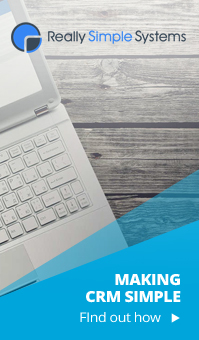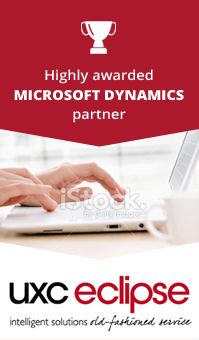
Which CRM Software is Best for You?
Once you know what the business need is, where the focus
will be, what sort of vendor you want to work with then it will be time to
evaluate software. As well as looking at the marketing or service function, you
will need to look at the basic features that make the software something your
business wants to use.
We have broken this into three areas:
- Data – reporting, importing, exporting and integration with
other systems
- Useability – common tasks, email and mobile workers
- Tailoring for your needs
Importing/Exporting Data
You need to be able to import existing client and prospect contact information from existing sources such as spreadsheets, Microsoft Outlook and your accounting package as well as export information out of the CRM software.
Some believe that the top 3 priorities for a successful CRM implementation are 1) Data 2) Data and 3) Data – as the old saying goes – rubbish in, rubbish out.
Your users need to be able to trust the new system and starting off with good clean data is important.
Reporting
To get the most from your investment in new CRM software, you will need to be able to generate custom reports that are meaningful to you, your managers, your staff and your business. The CRM software you choose should allow you lots of flexibility in this regard.
Data Integration
It is important your CRM solution works seamlessly with your back office products, such as your accountancy and distribution systems.
Some of the CRM suite vendors are part of a larger suite that may include financial, manufacturing and distribution functions. Consider whether you need a CRM that ‘reaches back’ into your supply chain – and how far it needs to go.
Useability
Your new CRM software should be easy and intuitive to use and not require hours of specialised training for your staff. As a rule, if it is not logical and easy to use, your sales force and customer service staff will not use it correctly. Even a very complex high end CRM solution shouldn’t mean it is difficult to use. Check that the interfaces are easy to navigate and that most common tasks are not laborious or hard to use. The right CRM solution should make life easier for you and your staff.
Complexity
Like most business purchases, you get what you pay for. That doesn’t mean you should go and buy the most expensive solution on the market. For many small businesses, a simple “off the shelf” solution will be ideal. Similarly, a department in a larger business may be well served by an “off the shelf” solution with good integration capability.
For other larger businesses whose needs are more complex, a more robust, scalable and powerful system may be required.
Mobility
The work force of today is more mobile than ever, so your sales and customer service teams may need to be able to connect to CRM software via their home based computer, Notebook, or smartphone/Blackberry/iPhone.
Consider how you want them to access the system – do you want a simple Internet access or a Secure VPN.
Many companies now provide fully functional but cut down phone-based applications based on the CRM application – this means that mobile users can transact on the road as we as they do in the office.
Integration
It is important your CRM solution works seamlessly with your office productivity applications such as word processing, spreadsheets and email.
For example if you use Outlook, find out how emails sent from Outlook are recorded in the CRM system.
Customisation
It is essential your CRM system works for your business processes. This is less of a problem than it used to be as the best solutions these days can be fully customised but check how easy it is. Check how deeply you can customise and how much it will cost during the initial set-up.
A word of warning – customisation is good – modification is usually bad. Customisations as a general rule mean that system upgrades happen easily and without too many hitches. Modifications on the other hand often mean that you have changed something that the software vendor does not support. So at upgrade time you need to take care of changing the modification code – at your expense.
Setup and Training
A system can be setup quite quickly and easily by your Implementer. Time is usually taken in the tailoring of that system for your specific needs. This may include tailoring screens for your specific business practices such as geography, or customer identification. Getting the system right at this point in time - you will save and make money in the long term.
Setup should also cover areas such as importing your current data, ensuring it is of high quality etc. Similarly, basic reports to run your business should be created at setup time.
Training needs to be taken care of and is important to ensure that users are enthusiastic about the system.
Costs
The life-time costs of a CRM system can include:
- Implementation/Consulting costs
- Maintenance and support fees
- Upgrade costs
- Technical support and training
- Conversion from a cloud solution to an on-site solution (or
vice versa)
- Some CRM software packages are deceptively inexpensive but
make up for it in ongoing support costs. So ensure that you have a complete
understanding of ALL costs before signing contracts.
On-site or Cloud CRM
The availability of Cloud CRM solutions can offer a particular advantage for smaller companies who don’t have the finances to spend on software, or the understanding of IT to manage it themselves. Paying monthly might be popular, but on-site systems tend to be more cost-effective over time and offer far greater customisation flexibility. It’s almost always worth considering a Cloud application but, unless finances are really tight, it shouldn’t be your sole buying factor.
For more information on these different options see our pages on on-site CRM and Cloud CRM.
Summary
There are many CRM choices on the market. The key in identifying what solution is best for you is to understand how easy it is to achieve your goals with this new system.
Whether your system is built for sales or customer service, it is important that the users find it a useful tool and that information is easy to enter and report on.
Date posted: 2014-12-15 | posted by: miked
Tweet



